Central Kyoto
This page is dedicated to that area of Kyoto between
Kyoto station in the south, and the
Imperial Palace in the north.
The neighborhood
The only area in the city where there aren't famous temples to be pointed out.
This area can be considered the modern commercial heart of Kyoto, where to find department stores and international brands, particularly along two major streets,
Shijo Dori and
Kawaramachi Dori, but there are also more traditional narrow streets, like
Pontocho and the
Nishiki Market, and typical japanese covered shopping arcades like
Shinkyogoku Dori and
Teramachi Dori.
Other shops and shopping centers can be found in the surroundings of the North Exit of
Kyoto Station.
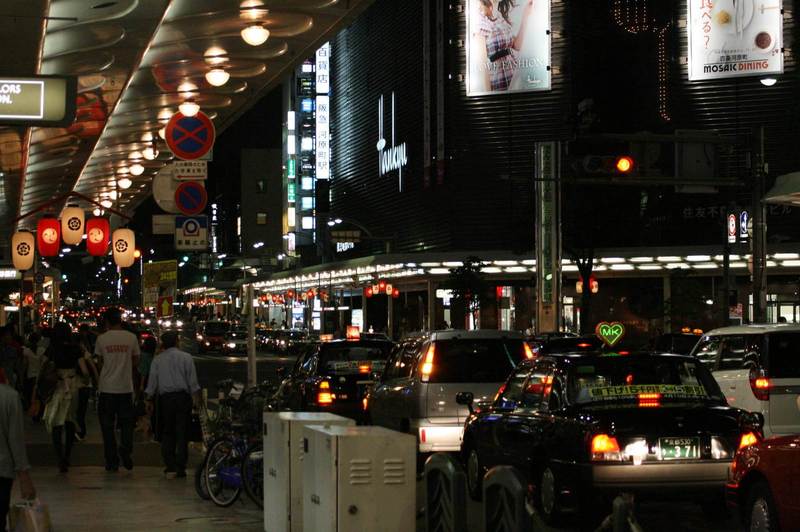 Shijo Dori
Shijo Dori
Pontocho
A small street about 500 meters long, between Shijo Dori and Sanjo Dori, west of the River Kamo
This area has been for centuries one of the entertainment areas of the city (also a red light district), and is today full of tea-house, bars, clubs and restaurants of all types and all price ranges (some are really expensive, pay attention), I suggest a walk in this area especially in the evening when the atmosphere becomes magic.
It is also one of Kyoto's
hanamachi, namely the geisha districts. However, it's much more rare to encounter some geisha in this area rather than, for example, in the more popular area of
Gion.
In the northern part of Pontocho there is the
Kaburenjo Theatre, where some pretty famous shows are performed by geishas and are popular among tourists: especially the
Miyako Odori in April (more information
here) and the
Kamogawa Odori in May.
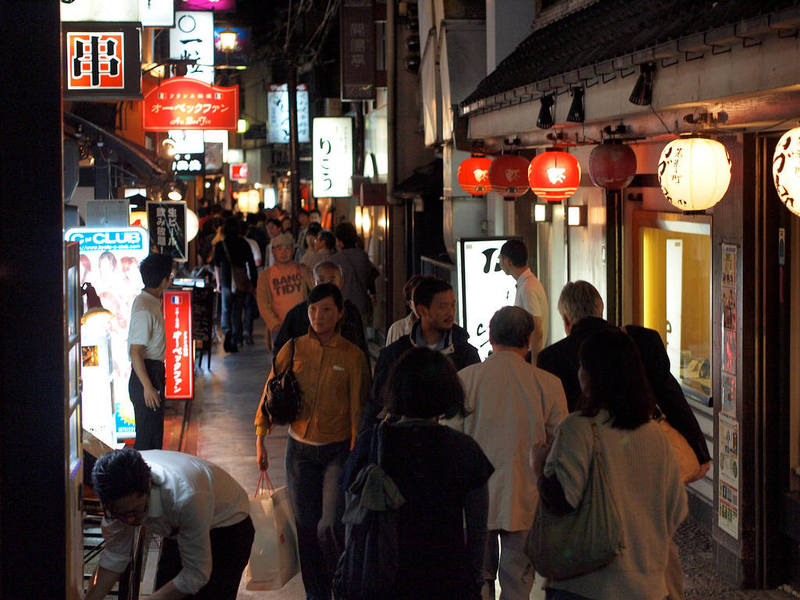 Pontocho in the evening (photo taken by h_maru)
Pontocho in the evening (photo taken by h_maru)
Nishiki Market
One of the oldest shopping streets of the city. It is a covered gallery, where there are 126 stores concentrated in only 400 meters, which runs parallel to Shijo Dori about 150 meters north, and ends crossing with Teramachi Dori to the east.
The Nishiki Market is specialized mainly in food, not by chance it is also called "The Kitchen of Kyoto", and is the perfect place where to find any type of food, vegetables and fresh fish, but also kitchen utensils, prepared food to take away and several restaurants (for example, there are a few places to eat inexpensive sushi).
Taking a walk through this market with a Japanese friend would be very interesting, just to get an explanation of what the various products exposed are, because most of the tourists usually can't recognize most of them.
Inside the arcade, in the eastern end, there is also a small curious Shinto shrine, the
Nishiki Tenmangu Shrine.
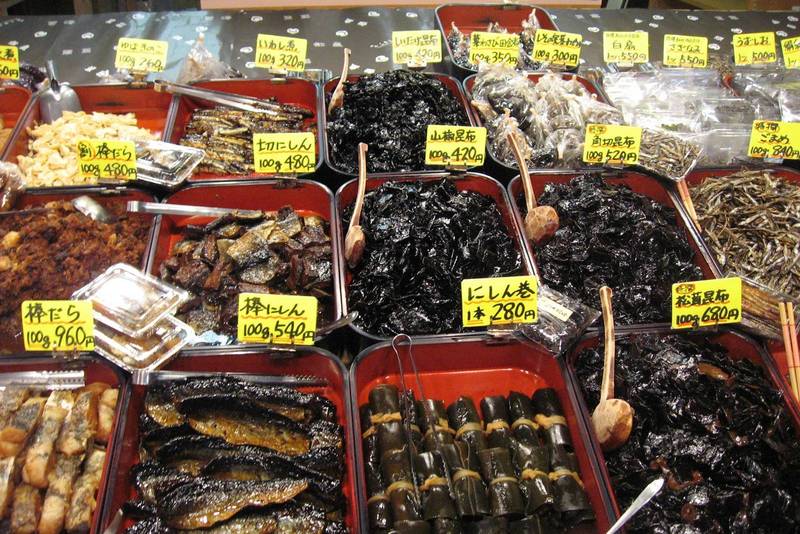
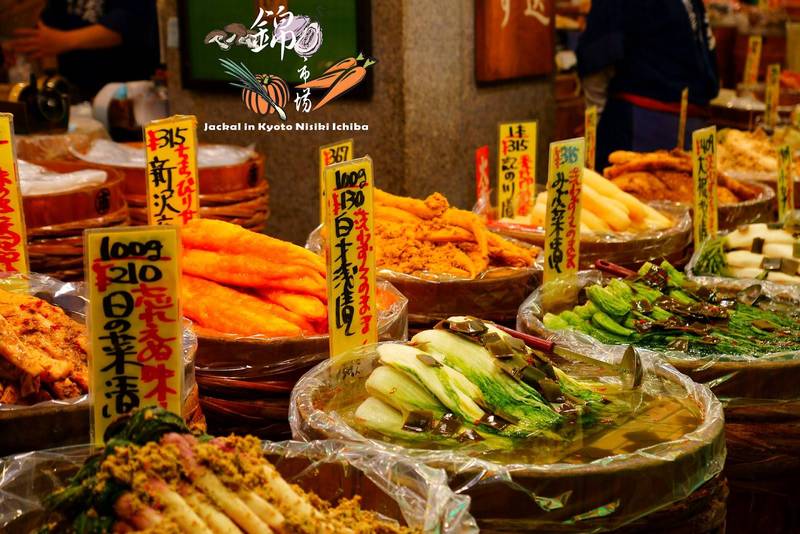 walking through the Nishiki Market
walking through the Nishiki Market
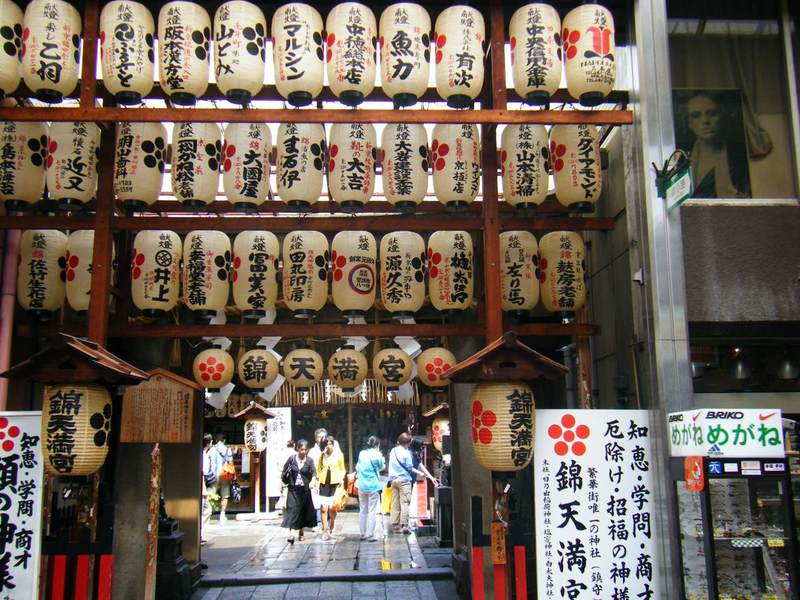 entrance to the Nishiki Tenmangu Shrine
entrance to the Nishiki Tenmangu Shrine
Kyoto International Manga Museum
(admission 800 yen, opening hours 10:00-18:00, closed on wednesdays)
This museum is located one kilometer north of Shijo Dori along
Karasuma Dori.
Rather than a museum, I would define this place a large library of comics, in fact you can find thousands and thousands of manga (about 50,000 in total) from 1970 until today, that you can consult. Obviously the majority of the volumes are in Japanese, but there is also a small section dedicated to translated manga (
Manga Expo). According to the official website, there are about 1000 volumes in English.
Considering that, however, there is a rather high entrance fee, I do not know how much is worth to visit this place for a tourist.
The museum also hosts temporary exhibitions that vary in months and whose admission will be charged separately, at
this link you can find the schedule.
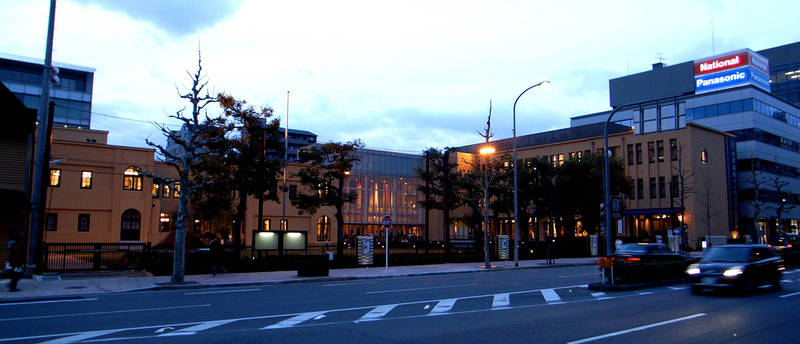 the exterior of the International Manga Museum (photo taken from wikipedia)
the exterior of the International Manga Museum (photo taken from wikipedia)
Sleeping, where to stay in Central Kyoto
This is certainly the more recommended area of Kyoto to stay, along with the area around
Kyoto station.
There are plenty of hotels, but few are those really cheap ones.
The cheapest by far, excluding the
internet cafes, are these two guest house/hostels where you sleep in dormitories for about 2000 YEN per night, the
Guest House Jalan-do and the
Guest House Khaosan Kyoto.
Among the cheapest business hoteles, I suggest the
Hotel Oaks Kyoto Shijo, the
Best Western Kyoto, the
Hotel Karasuma Kyoto, the
Hotel Mitsui Garden Kyoto Shijo, but anyway you have to pay a minimum of 50-60 euro per night, unless there are special super discounted offers.
An interesting solution could instead be the
First Cabin Hotel Kyoto Karasuma, a new hotel "concept", born in recent years and currently available only in Osaka and Kyoto, basically a mixture between a normal hotel and a
capsule hotel. The rooms are tiny but very modern, while the common services are of excellent quality, and you can sleep a short walk from Karasuma station for just 3,500-4,000 YEN per night.
If you are looking for a more traditional experience, you could choose the
Watazen Ryokan near the Nishiki Market, a not very expensive ryokan, from 10,000 YEN up (it seems expensive but it isn't, considering the prices of ryokans in Kyoto).
Eating, recommended restaurants in Central Kyoto
In
Pontocho you can find some good restaurants, but try to understand the price-range before going inside because there are some really expensive ones.
For the sushi, right in Pontocho I recommend
Kappa Sushi, a good quality restaurant with "affordable" prices where to enjoy great sushi and sashimi (there are also English menus).
At
Musashi Sushi, a kaiten sushi located at the intersection between Sanjo Dori and Kawaramachi Dori, you can eat instead a decent-quality sushi for 137 yen per plate (2 pieces each plate).
If you want to try one of the best
sukiyaki, a delicious Japanese dish of meat, in the upper part of Sanjo Dori is one of the most popular restaurants in the city,
Mishima Tei. However the prices are almost prohibitive, you should expect a minimum of 10,000 yen per person (
official website).
Anyway, you can find hundreds and hundreds of restaurants scattered through the meanderings of the area to suit all tastes and all budgets, this is one of the "easiest" areas where to eat well and spend little.
Pratical guide, how to get to Central Kyoto and map
The main railway stations in this area are
Kawaramachi station and
Karasuma station along the
Hankyu Kyoto line, and the metro
Shijo station, close to Karasuma station and connected to it directly through a short tunnel, served by the
Karasuma line (Kyoto Municipal Subway).
To the
International Manga Museum the nearest metro station is
Karasuma-Oike station, the next station to Shijo along the
Karasuma line and served also by the
Tozai line.
The
Shijo-Kawaramachi and
Shijo-Karasuma bus stops located in this area are two important interchange bus stations, served by many bus routes and reachable without changes from most of the city (220 YEN).
Guided tours, activities and other things to do
If you are planning a trip to Japan and you want to do something more than just visiting famous places and monuments, we suggest you to use
Rakuten Travel Experiences.
How to use Rakuten Travel Experiences
Rakuten Travel is a very useful website to
enrich your travel experience, especially if you are going solo or it's your first time in Japan.
Because of the language barrier (and more), in Japan it is very difficult to interact with the locals and to get off the tourist track.
Thanks to Rakuten Travel you can find a lot of interesting and sometimes unique
guided tours and activities all over Japan (and not only in Japan), that you would otherwise never be able to enjoy.
But there's more: on Rakuten Travel you can also
buy tickets for several famous attractions, events, transportation and other useful services for tourists. Last but not least, you can
reserve a table in hundreds of restaurants.
Some examples
Take a look at Rakuten Travel Experiences
You may also be interested in
 Pontocho in the evening (photo taken by h_maru)
Pontocho in the evening (photo taken by h_maru)
 the exterior of the International Manga Museum (photo taken from wikipedia)
the exterior of the International Manga Museum (photo taken from wikipedia)